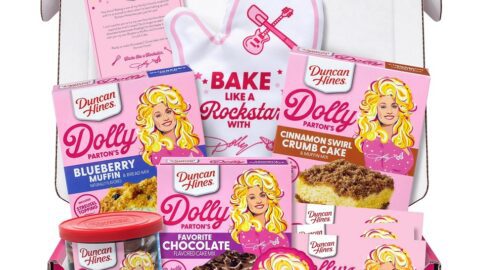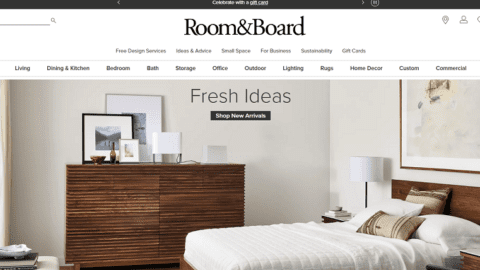In response to evolving consumer behavior, many retailers are pivoting from malls and large-format stores in city centers to neighborhood locations that aim to serve the work-from-home population. While retail presence is shrinking in many big cities, apparel retailers’ brick-and-mortar locations are actually growing overall — just with a different approach. Brands that typically take the large-format route are adopting smaller footprints in residential neighborhoods.
Even if brands are holding on to their downtown locations, many are still experimenting with small formats in order to offer customers more intimate and convenient experiences. While this shift is in large part due to the effects of the pandemic, the industry was already heading in this direction — the pandemic just helped speed up the rollout.
Meeting Consumers Closer to Home
With the continuation of a mostly hybrid and remote workforce, retailers have had to reassess how to best get in front of consumers, new and existing, as those who would typically commute downtown each day are now staying closer to home. Some retailers have taken a look at consumer data, analyzing where consumers are making online purchases to better understand where a brick-and-mortar store might be successful based on the shoppers’ location. Not surprisingly, many have found the data points to residential enclaves in and around cities where consumers live.
As a result, retailers have opened stores on neighborhood mall streets where consumers might already be visiting for reasons outside of shopping, like fitness or restaurants. Brands like Bloomingdale’s and Macy’s have introduced Bloomie’s and Market by Macy’s, respectively, that cater, in part, to millennials who bought homes in the suburbs during the pandemic.
Advertisement
For Market by Macy’s in particular, the “off-mall, small-format” approach allows the brand to diversify its offerings, successfully getting in front of new shoppers while continuing to see foot traffic at its large-format locations — something that can be a concern to big-box retailers when entering the space with another concept. Instead, we are seeing an increase in trip frequency to these smaller stores and regular visits to large-format ones to access its different products. In general, this strategy enables companies to enter a new market where they didn’t have a presence, meeting consumers where they are to make buying online, in-store shopping and returns easier.
Successfully Adopting a Smaller Format
While a smaller footprint might seem more manageable to build, designers have to be surgical in their approach in order to create a hyper-curated store. The store must also be adaptable enough to always give the consumer a reason to want to come back, time and again, as commodity alone is no longer enough.
That said, because of the smaller footprint, retailers have more of an ability to localize the store to the surrounding community, particularly where real estate is at a premium like in urban city centers or on college campuses. A downtown location in a major city might stock a larger apparel section, while a store on a college campus might carry quick-and-easy meals or dorm room necessities.
It’s important to look at the demographics, customer expectations and future needs five or 10 years down the road in order to curate a product selection that is responsive to that particular community’s needs, continuing to attract loyal customers by providing, or predicting, exactly what they want.
Small formats should be designed to be easily accessible and simple to navigate. Designers can also create a unique sense of place by integrating local expressions and subtle nods to the region into the design itself, to truly immerse the store into the community and make it feel like it belongs while still maintaining a global brand image.
Another way to create a memorable in-store experience is for retailers to incorporate features like on-site restaurants, allowing shoppers to enjoy a beverage while browsing, as well as interactive elements like customization stations. Experiences like these help make a store feel more immersive and specialized, particularly in a smaller environment. Not to mention that it gives customers another reason to come out and visit the store in person.
A great example of the small-format retail experience is Bloomie’s. We partnered with Bloomingdale’s on the store concept, from the typical 150,000-square-foot layout in favor of a 22,000-square-foot micro-store. Bloomie’s features top brands and tech-enabled stylist services, plus an on-site restaurant located on a vibrant, neighborhood mall street in Fairfax, Va.’s Mosaic District — its first-ever location.
The Bloomie’s floor plan is easily adaptable, with rotating display carts to spotlight trending product lines, encouraging discovery by promising customers new finds with every visit. The space also creates a specialized experience with interactive elements such as gift wrapping and monogramming stations, even incorporating local culture through its food and beverage offerings. These details help consumers feel like they’re getting a one-of-a-kind experience, and that is what keeps them coming back.
When Macy’s launched its small-format store, Market by Macy’s, NELSON helped the brand take a similar approach. The Market by Macy’s location in South Lake, Texas, a community outside of Dallas, deliberately shies away from a big-brand store model. Instead, the space incorporates local tastes and aesthetics to elevate the customer experience, ensuring that shoppers feel a tangible sense of community with each visit. The design celebrates seasonal stories with flexible merchandise displays and offers multi-purpose space for programming and events.
Navigating the Challenges
While this shift to small formats might benefit retailers, it does decrease foot traffic from metropolitan areas and central business districts — something cities have become reliant on. A way to appease all parties is by administering a hub-and-spoke model, which also allows retailers to open small-format stores without compromising their large-format locations.
A hub-and-spoke model can help bring suburban shoppers downtown, and downtown shoppers to the suburbs, by appealing to consumers’ varying needs. Each store serves a different purpose, stocked with products and experiences that are hyper-localized, giving a reason to visit both stores depending on what a consumer is looking for.
The larger suburban stores can also act as an extended shelf. If there is a larger hub outside the city, product that isn’t stocked in the city or that has sold out can be delivered to the smaller city location, eliminating shipping for customers. Ultimately, a hub-and-spoke model can create a symbiotic relationship between store locations, allowing each to exist in harmony.
Another challenge that is tied to a shift to a small format, and any major change for retailers, is how to teach consumers to navigate the changes and educate them on what exactly the changes mean. A customer might be used to going to the large-format location and having an abundance of product options. When it comes to a small-format store, a fraction of what might be available at a large format store is in stock. Customers may be missing their favorite item or the one product they were looking for, and it can cause confusion or frustration. To avoid this, retailers must carefully consider their product selection and how to relay that story to their consumers.
The retail industry is a thoughtful combination of all these levers that are happening at once. Over the next 10 years, the pendulum will continue to shift and consumer patterns will change. In the years after that, the pendulum will swing back, bringing with it changes once again, but eventually the industry will find a happy middle ground — though it might take longer than expected. That’s how retail operates; it reacts to the needs of the customer.
To withstand all of the inevitable changes, brands need to continue to come up with ways to get people to want to come to a brick-and-mortar store. People today have access to pretty much everything they need at all times, so we must create experiences that keep customers coming back, not just once but continually.
With over 25 years of active involvement in the design, brand and retail community, Brandon Page has continuously adapted and evolved alongside the rapid changes in the industry. He offers a unique and comprehensive perspective on design, striving to create harmonious and forward-thinking projects that seamlessly align with the customer journey. As VP of Brand Identity and Communication at NELSON Worldwide, he oversees all brand, design and environmental graphic touch points across all designated projects within the firm. He and his team are committed to pushing the boundaries of design and conceptualize what’s next and new.









